When talking to other bikers about motorcycle road trip essentials you’re sure to get different opinions on what necessities you need to carry and how to carry them. The viewpoints you’ll hear will be as varied as the individuals you are talking with. In this feature we’ll share what we’ve learned about the subject in the past 4 decades of rolling on two wheels. To sum it up in one simple phrase I would say “Make sure you bring everything you might reasonably expect to need, and leave some extra room for items you might pick up along the way”.
Dress For The Slide…Not The Ride
The right riding gear is more important than anything else you bring along for the ride. These days I’m an ATGATT (All The Gear, All The Time) kind of rider. Other bikers don’t roll that way. No judgement here. I believe it’s a matter of personal choice.
In the past I probably logged more than 150,000 miles wearing nothing but jeans and T-shirts. Today I won’t go around the block without suiting up in full armored protective gear. I’ve probably logged 100,000 miles wearing a novelty “brain bucket” helmet, or wearing no helmet at all. Today I wear nothing but a quality HJC modular helmet.
Call it the wisdom that comes with age. When you get deep into your 60’s you become acutely aware of just how vulnerable and fragile you really are when riding. I’m thankful I put all those miles behind me without major incident, but the law of averages dictates that sooner or later something will go wrong. I choose to do everything within my power to reduce risk.
Comfortable In My Own Skin
The good news is that you don’t have to worry about packing this gear. You’re wearing it! I personally own two different riding suits. My preferred suit is a genuine BMW Motorrad full leather “Double R” jacket with armored shoulders, elbow and back protectors. The jacket features multiple zippered vents that can be opened when riding in warmer weather.
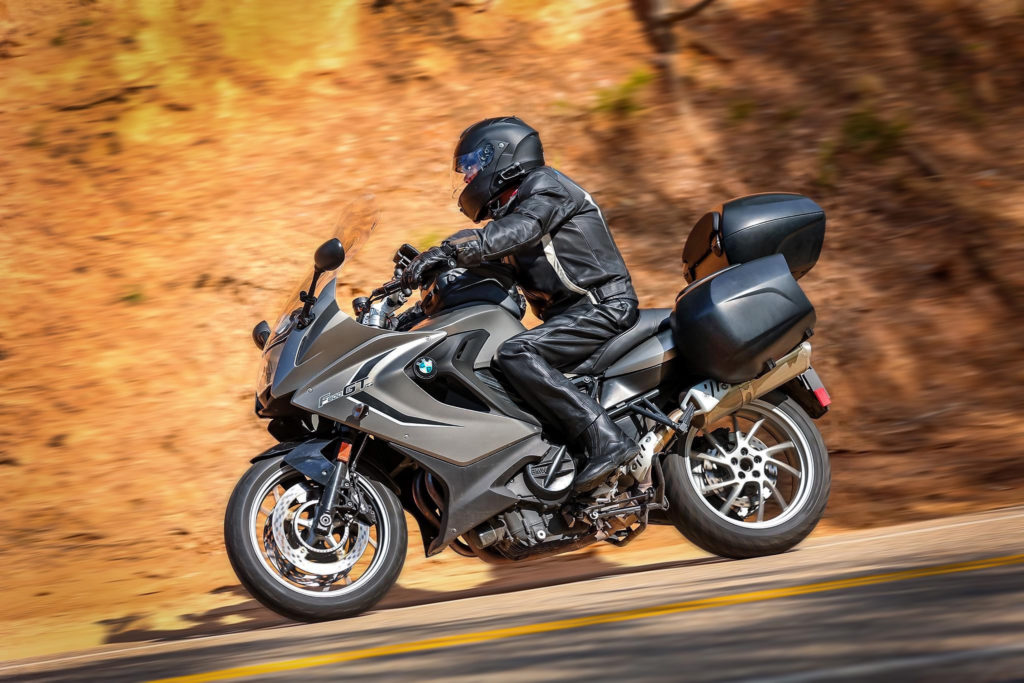
BMW Motorrad Double R armored jacket and leather pants
The jacket is paired with armored motorcycling pants that has protection built in at the knees, hips and lower back area. Again, zippered vents facilitate air flow on warmer days. The jacket and pants can attach to one another to form a one-piece suit, along the lines of full racing leathers, though I rarely go to the trouble of utilizing this functionality.
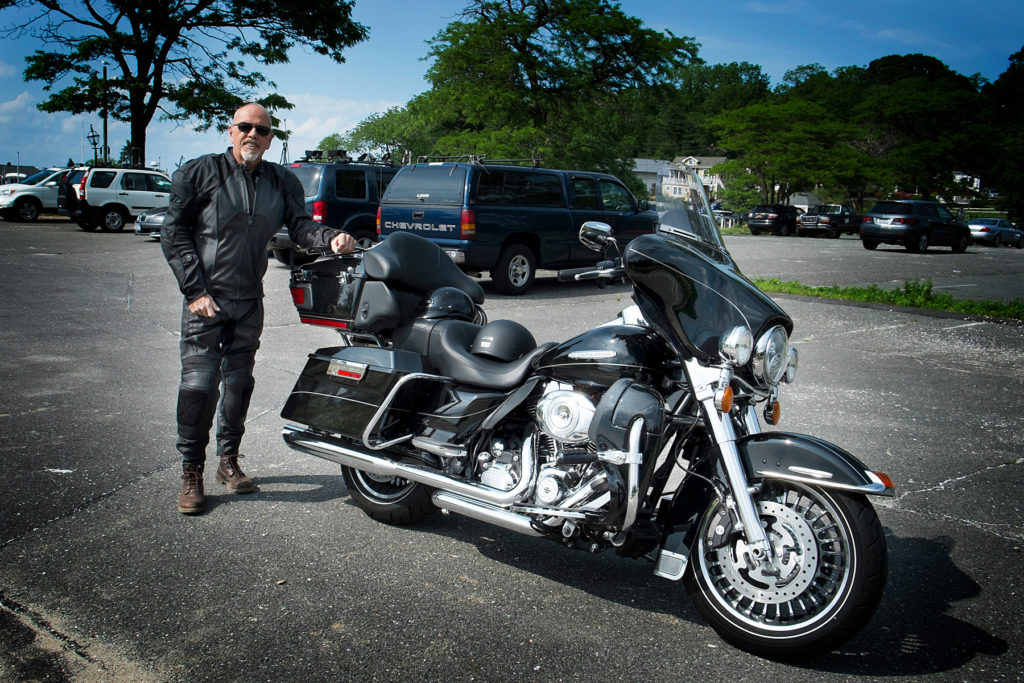
The author wearing a 2 piece Joe Rocket leather riding suit
Leather is my first choice in riding apparel for its abrasion resistance. I’ve become quite attached to my skin after all these years on this planet. I’d like to keep my relationship with it. There is no other material offered in riding gear that has the abrasion resistiveness of leather. Period.
The Heat Is On
There are days when the heat gets to be really too much for full leathers. My penchant for wearing the most protective gear available dictates that these ‘hot’ days are few and far between. I’d rather suffer through a little discomfort from the heat than that which would be experienced after orthopedic surgery or skin grafts. But on those really hot days I trade in my leathers for an Alpinestars mesh suit.
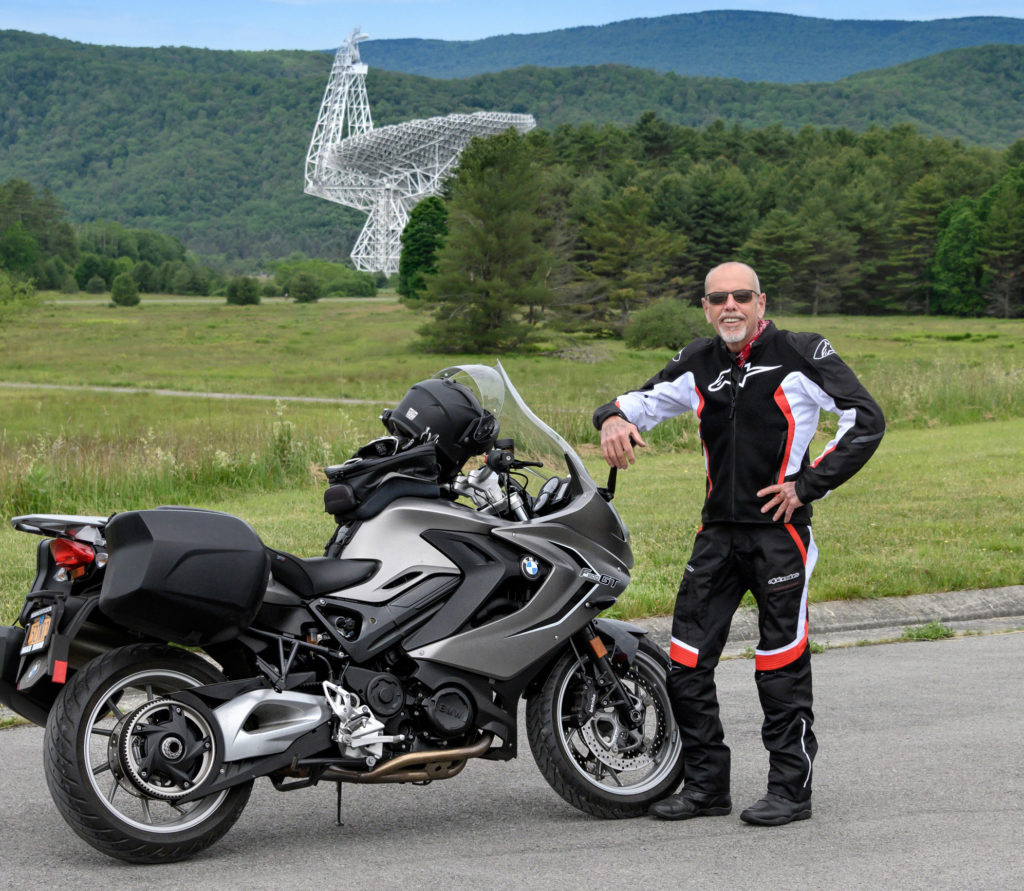
Alpinestars mesh armored riding suit for hot weather
Again, this high quality gear offers built in armor protectors in all the key places. This suit is much more comfortable to wear in higher temperatures, but clearly doesn’t offer the same level of protection afforded by full leather. A trade off for certain. I generally wear this suit only if I’m riding close to home or when I’m faced with a lengthy stretch of hot weather out on the road. I don’t have enough room to carry both suits with me on an extended getaway. If I have any doubts at all about the weather I’m likely to encounter in my travels, my leathers get the nod.
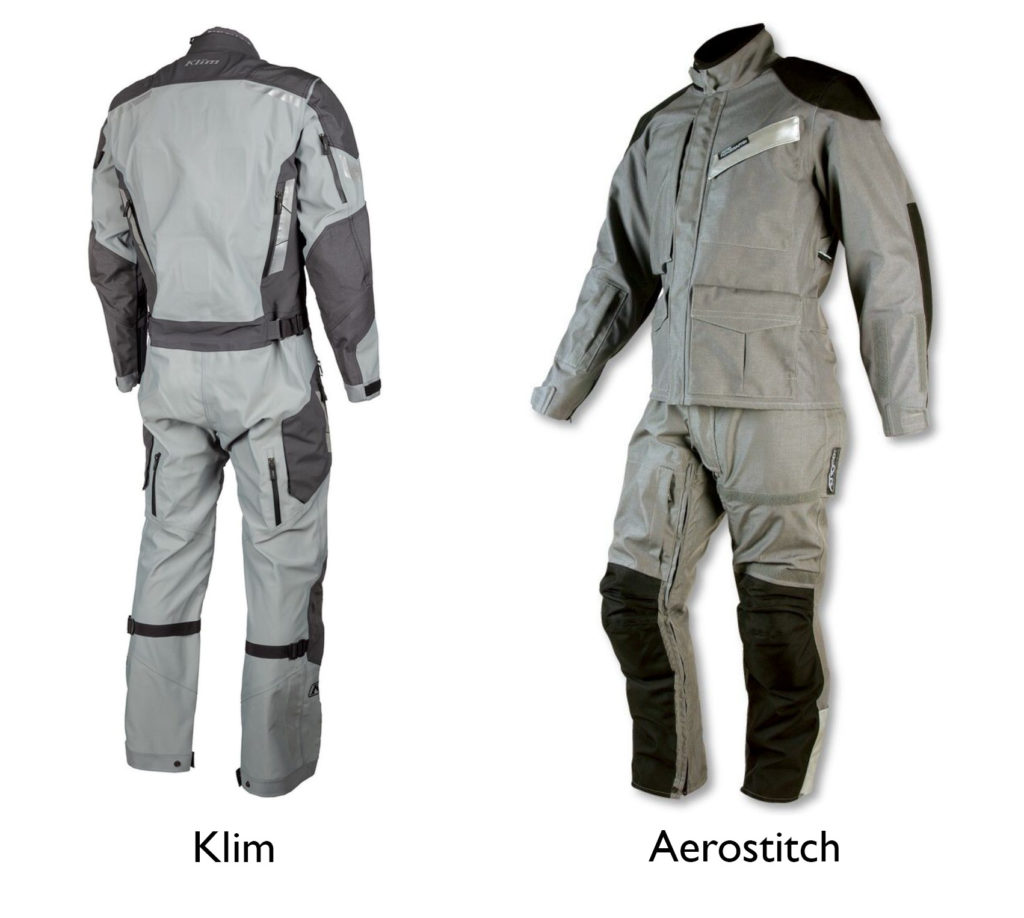
Adventure (ADV) suits from Klim and Aerostitch
I know quite a few riders who swear by the benefits of adventure riding gear offered by companies like Aerostitch and Klim. These apparel systems are touted as being all-season capable and fully waterproof with their Gore-Tex® fabric construction. You certainly see plenty of these suits out there and I hear pretty much nothing but good things about them. I personally don’t like the style of these suits though form should follow function. These suits also carry a premium price. A good Klim or ’Stitch adventure suit will set you back more than I have invested in my BMW leathers and Alpinestars mesh suits combined.
Mother Nature Is A Witch
If you’re the type of rider that only goes to “Bike Night” on warm summer evenings or the occasional local charity run on nice weekends you can skip this section. But if you are going to venture out on extended motorcycling adventures you need to prepare for inclement weather. Sooner or later you will encounter it. It’s inevitable. Consider the proper apparel to be motorcycle road trip essentials.
Nothing can ruin your enthusiasm faster than cold weather or rain; but only if you allow it to do so. There is a saying that “There is no such thing as bad weather; only inadequate gear”. Truer words have never been spoken. In my early years of riding I spent too many days sitting at home (or sitting under highway overpasses) because I was ill-prepared for inclement weather. Those days are gone forever.
Fighting The Elements
Today I am prepared for extreme weather. The smaller of my two panniers (That’s ‘saddlebags’ for you American Big Twin riders) contains my foul weather gear. Packed in that small compartment is a Gerbings electrically heated jacket, a pair of Gerbings electrically heated gloves and their dual channel heat controller. A fused pigtail is wired directly to my battery and emerges below the saddle where I can quickly plug in when the temperatures drop to uncomfortably low levels.
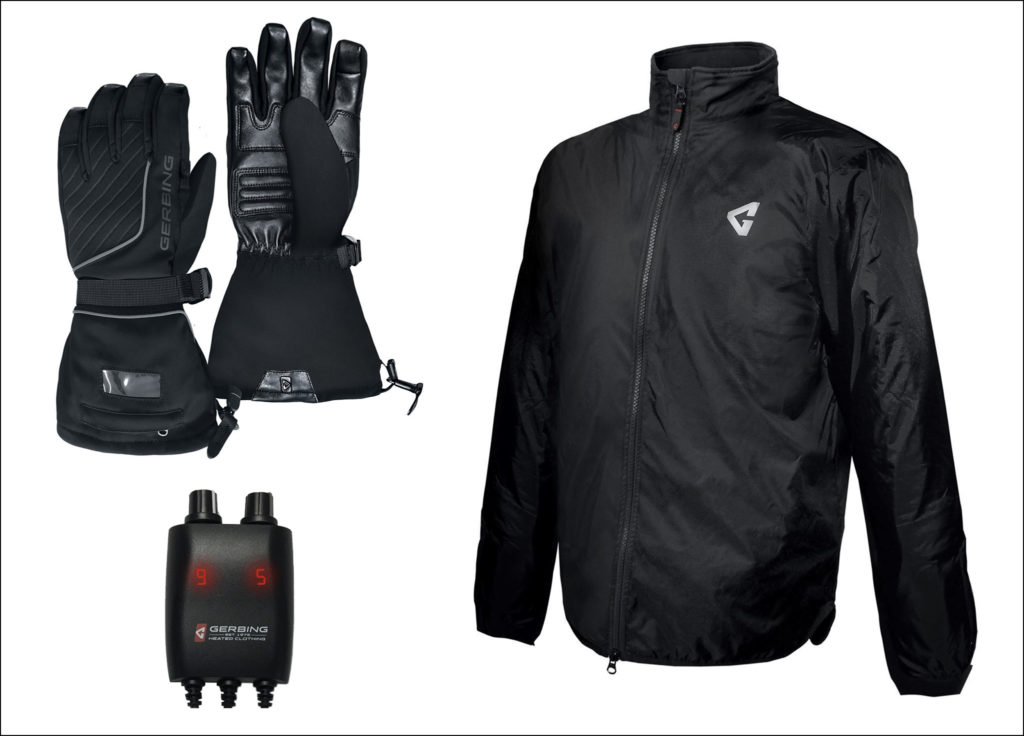
Electric heated jacket, gloves and controller by Gerbings
Coupled with the heated grips on my BMW sport touring bike I ride regularly in near freezing temperatures; with riding-speed wind chills far below freezing. You can read about some of these cold weather adventures in my book, “Road Work: Images and Insights of a Modern Day Explorer”.
Also in that pannier you will find a second set of riding gloves, a fleece neck warmer and a Nelson Rigg Storm Rider® waterproof riding suit. My riding boots are of Gore-Tex® construction and my feet have stayed warm and dry in the most torrential storms. A lesson all seasoned motorcyclists have learned: Put your rain gear on before it starts raining. Sounds pretty obvious, I know; but I can’t tell you how many times I waited too long or gambled that it wouldn’t rain. Trust me on this one. It’s much easier to pull over and suit up than it is to try to dry out and warm up afterwards. You’ve been warned…and you’ll remember this warning whether you follow my advice or not.
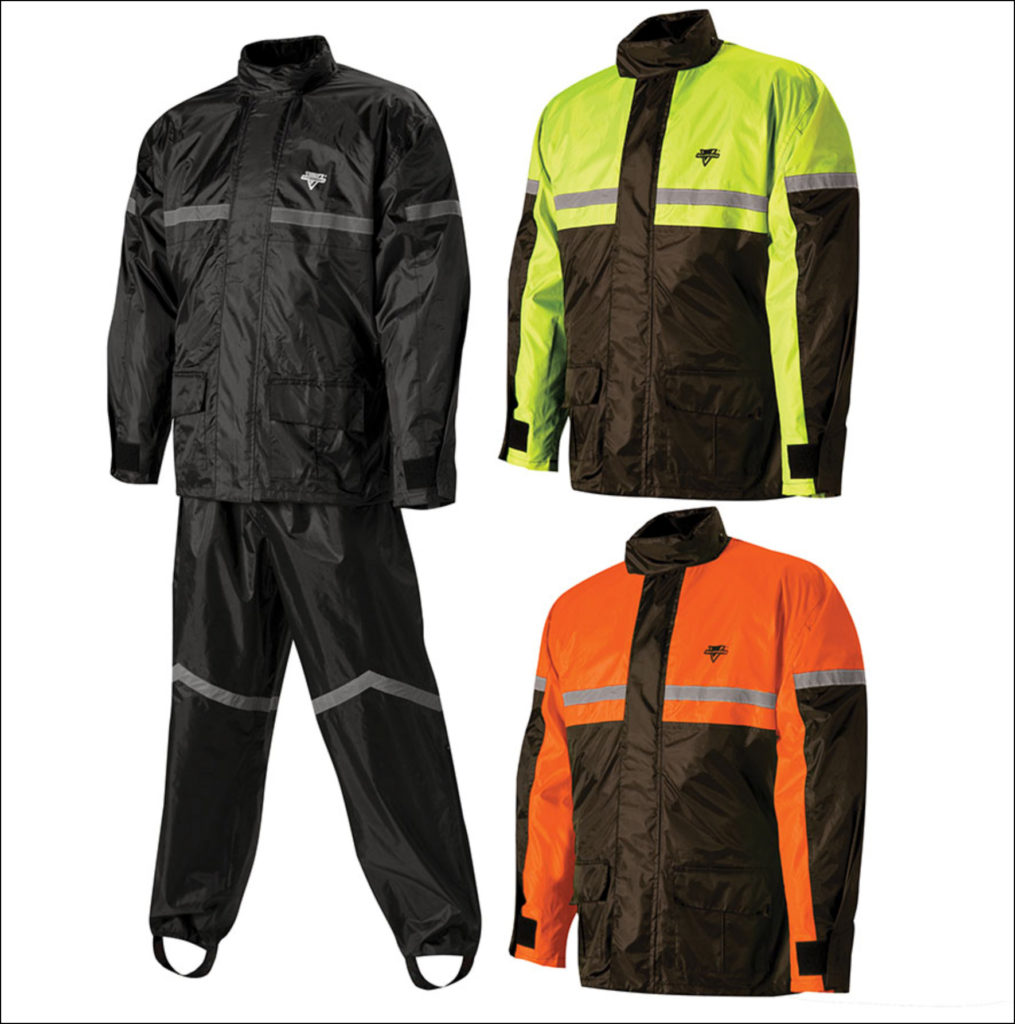
Nelson Rigg Stormrider foul weather rain suit
Mechanical Considerations
The larger of my panniers carries my emergency road kit. What I carry is what I consider to be the absolute bare minimum in motorcycle road trip essentials. As with weather, sooner or later you will be faced with a roadside emergency. The success and enjoyment of your journey will depend upon you ability to address the problem at hand.
Every motorcyclist should be carrying a flat tire repair kit. My bike (like most road bikes) runs tubeless tires so I don’t need to worry about inner tubes in the event of a tire puncture. I carry a very simple repair kit which consists of needle nose pliers to remove the offending nail, screw or whatever foreign object damaged the tire. Then I use a manual reamer to prepare the tire for its plug along with a plug insertion tool to insert the repair material into the damaged tire. The basic kit (reamer, insertion tool and five pieces of plug material) cost $7.50 on Amazon.
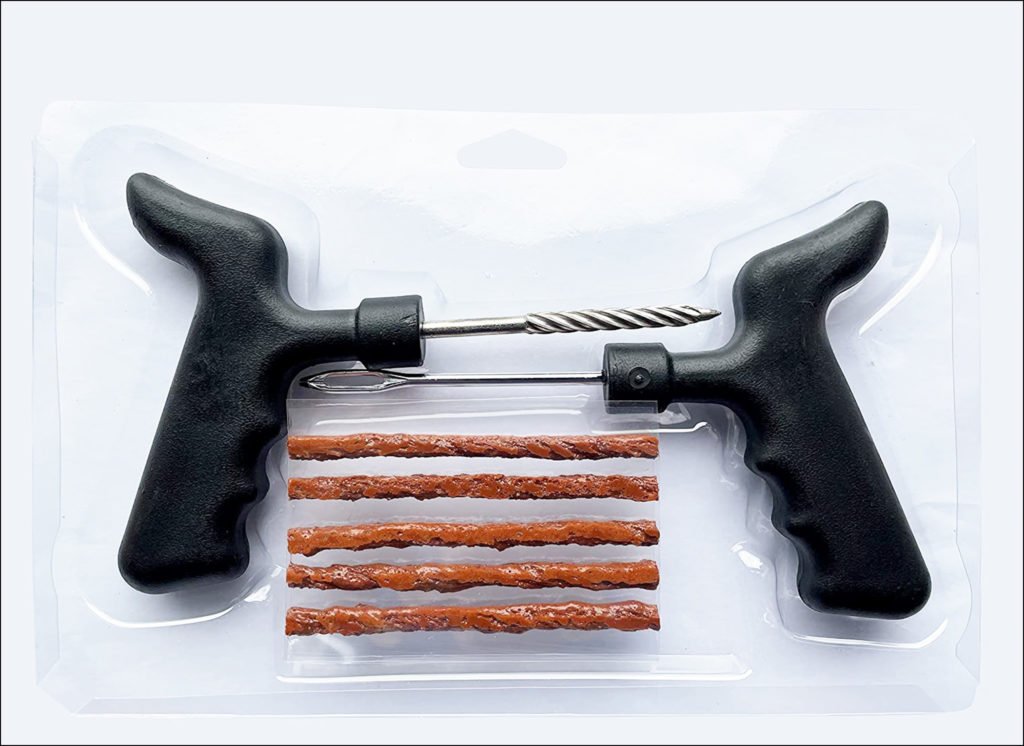
A basic motorcycle flat tire repair kit
If you’ve never repaired a tire on the side of the road there are countless videos on YouTube that illustrate the simple process. Anyone with a bare minimum of mechanical ability (like myself) can effect this repair. I recently experienced a flat tire hundreds of miles from home. It was the first flat I’ve had in over 30 years. It’s just a matter of time before it happens to you. Be prepared for this contingency. It took me less time to plug the motorcycle tire than it would have taken me to change a flat tire on my Jeep.
Pump It Up
Once plugged you have to refill the tire with air. You’ll obviously need to have some sort of compressor onboard. My choice is a handheld Ryobi rechargeable unit. I didn’t want to have to worry about tapping into the BMW’s sophisticated Canbus electrical system to power a 12V compressor. There are compressor options that are substantially cheaper than my choice. You generally get what you pay for. Make sure it works before you have to use it in an emergency. If you opt for a rechargeable unit like mine, make sure it’s fully charged before you head out on the road.
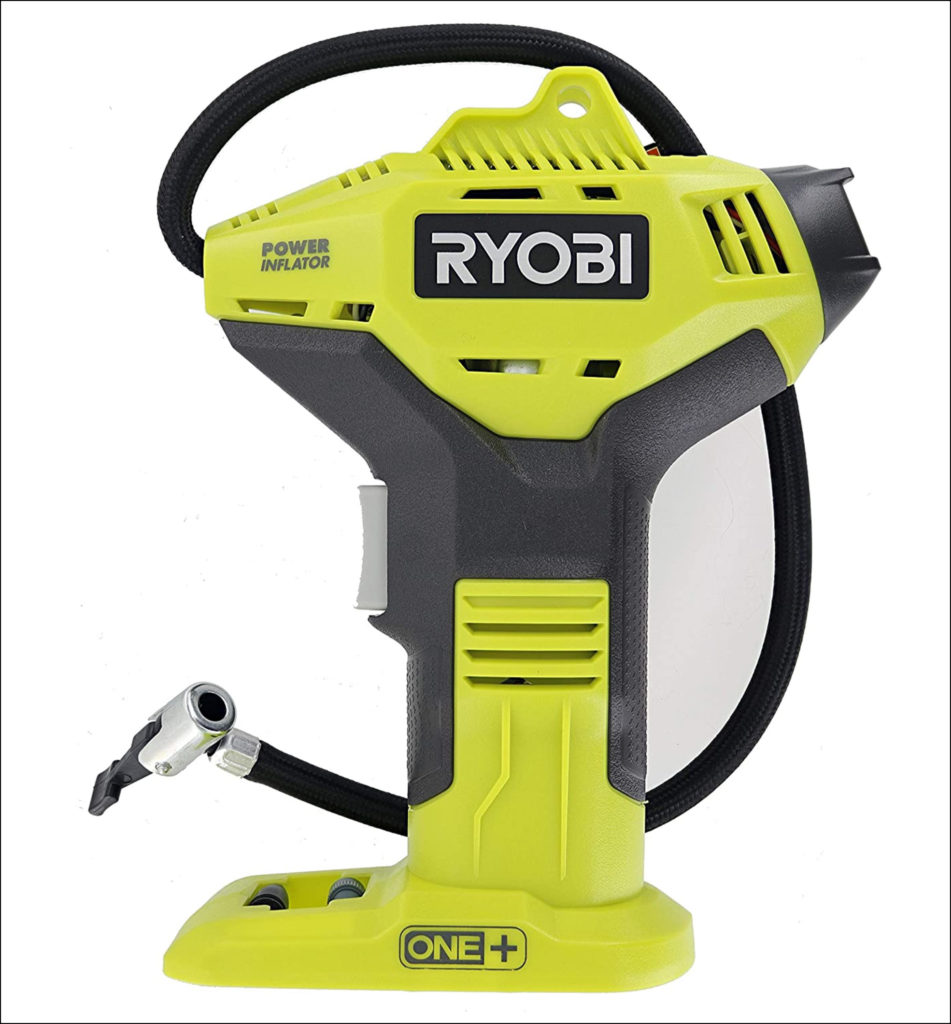
Ryobi rechargeable air compressor
I can’t get over the number of riders I talk to that don’t prepare for this common occurrence; choosing instead to rely upon luck and some roadside assistance plan. I’ve heard so many horror stories about both. I can’t imagine waiting hours for a tow or road service; when you can just get the repair done and be back on your way in less than 15 minutes.
Power Trip
Alongside my tire repair kit I carry a self-contained battery booster. Again, it’s just a matter of time before you have a need for one and it should be among your motorcycle road trip essentials. Mine has been out of its case twice in the last year alone. You might accidentally leave your lights on some day. You might experience a weakening battery failure. Either way it’s great to have the ability to give yourself a jump and be back up and running instantly.
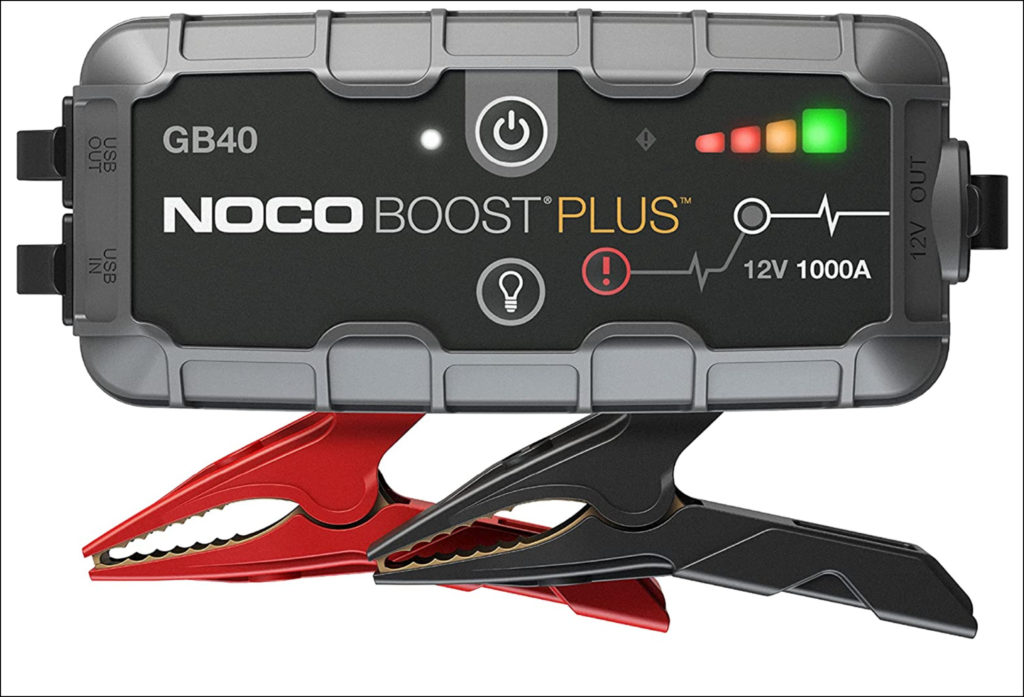
The unit I carry is a NOCO GB40 1000 Amp 12V rechargeable unit, available on Amazon for less than $100. It weighs about 2 pounds, fits in a small pouch and recharges with any generic USB charger. It works flawlessly and costs far less than any single road service call ever will. Make sure it’s charged before you head out on the road. Carrying one beats trying to make up stupid excuses about why you didn’t.
The Small Stuff
In the same side case that holds the tire repair kit and battery booster I also carry a small first aid kit, an LED flashlight and a small terrycloth towel. My bike is also fitted with a tank bag. In 30+ years of riding I never had one. Now I don’t know how I ever lived without it.
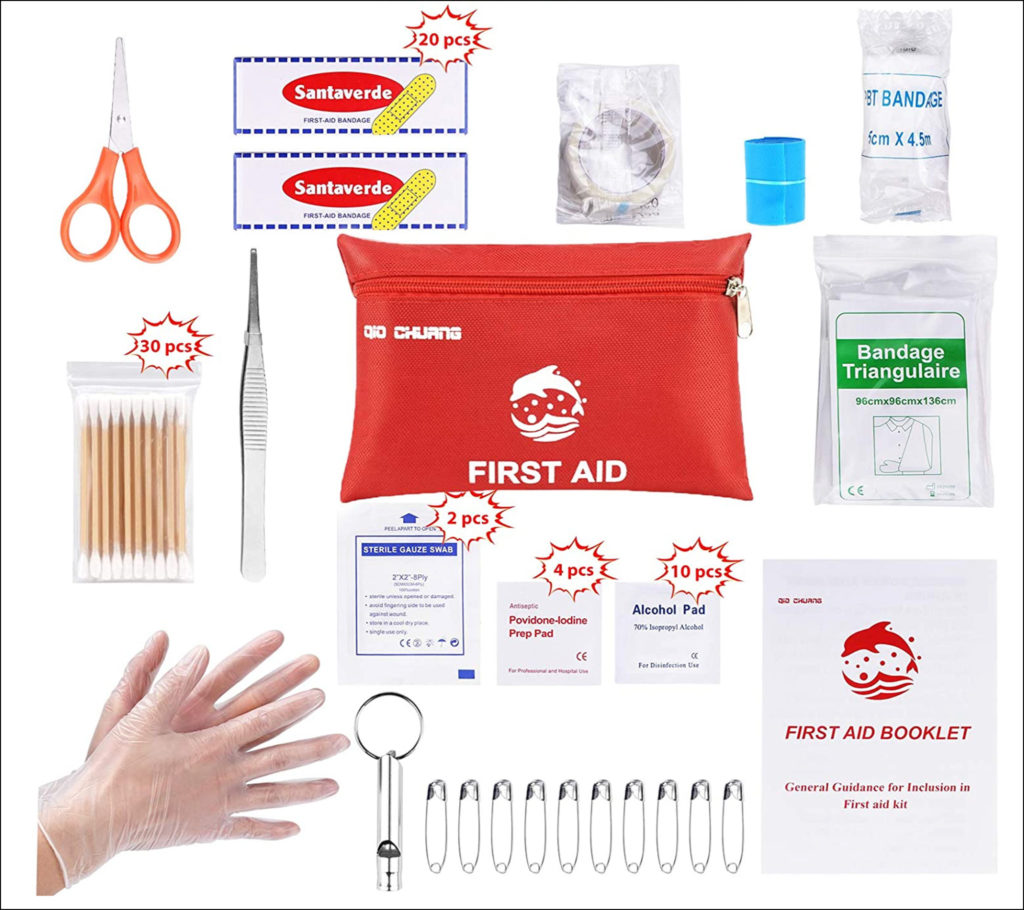
A compact first aid kit for minor medical problems
The tank bag stores my GPS unit out of view, a plate to drop under my kickstand when parking on soft surfaces, my sunglasses, reading glasses, paper road maps and all of my registration & insurance documents. There’s other junk in there, too. Think of it like the glove compartment in your car. It’s just as cluttered with stuff you don’t think you really need…until you do!
Final Words
That’s everything you’ll need as motorcycle road trip essentials when venturing out for a short day ride or on an extended motorcycle adventure. The rest is up to you. Most big touring bikes have a top case/Tourpak® which will accommodate all of your clothing and personal belongings. My small top case is dedicated to the camera gear I carry with me on the road so my personal items are relegated to a waterproof duffel bag on the passenger pillion. You can read more about that on a previous post entitled: Life In The Fast Lane • Long Distance Touring On A Sport Bike.
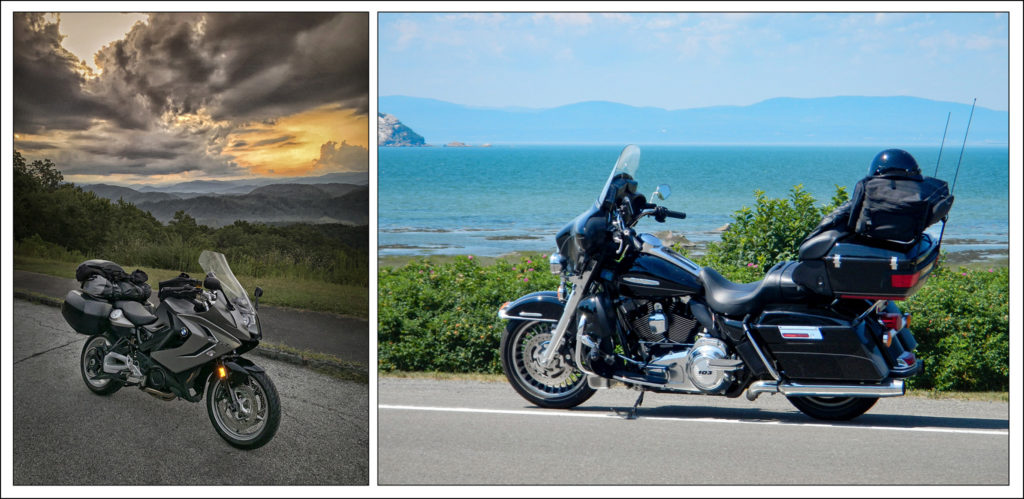
Packed for the long haul on a sport-touring bike and a large touring machine
Those of you that ride big touring machines will have no problem getting everything you’ll need onboard. I used to ride a big Harley-Davidson Electra Glide Ultra Limited® which had more than enough room for all of the necessities, all of my camera gear and all of the clothes and personal items my girlfriend and I would need for 5,000+ miles on the road.
Let’s not forget the serious adventure riders and Moto-campers. In addition to all the things already mentioned these explorers pack tents, sleeping bags, stoves, cookware and provisions. Where there’s a will there’s a way. Poke around online and you’ll be amazed to see what some of these adventurers carry with them.
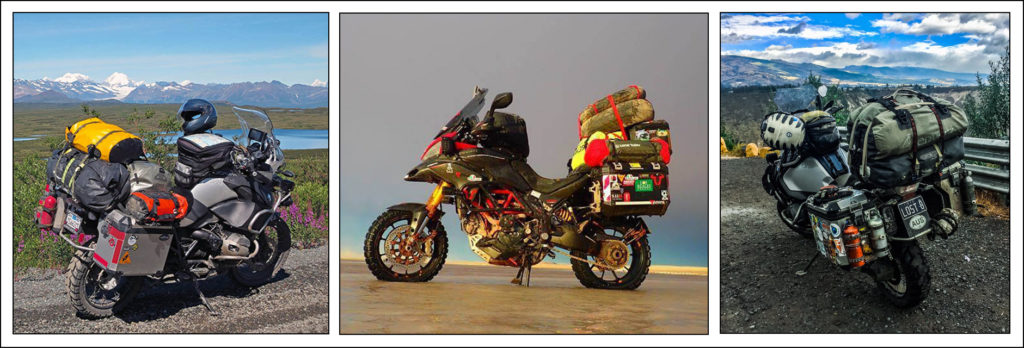
A breed apart. ADV bikes loaded for Moto-camping adventures
What have we missed? Are there other motorcycle road trip essentials you carry that we didn’t mention? Leave a note in the comments below. Be sure to subscribe to Roadcraft USA for notifications about new features and special offers. Ride safe, everyone!
Please help support the Roadcraft USA online resource by making product purchases through the links in this post. As Amazon Associates we earn commissions from qualifying purchases made through these links. There is no additional cost to you whatsoever. Thank you for your support!
Click Here to view an interactive visual index page where you can quickly browse through all of the great features that are published on the Roadcraft USA blog.

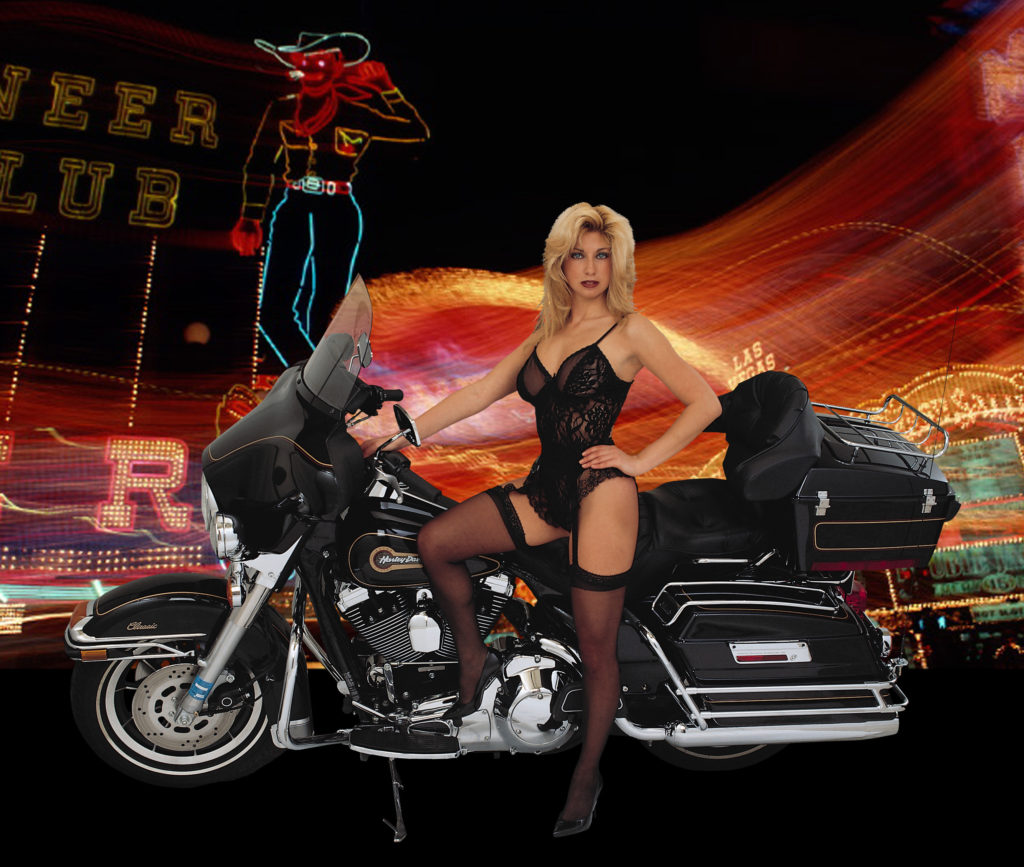
Chill vest and bead collar, along with NUUN tablets for your hydration pack during high temps.
Excellent suggestion, Muriel! Hydration is SO important. I failed to mention that my tank bag carries a couple of bottles of water. I stop regularly in hot weather to drink and refill my stash at every fuel stop. An ADV rider friend of mine employs the Camelback system and swears by it. Thanks for commenting 🙂
Thanks for sharing ! Good advice for us long distance riders.
My pleasure, Dennis. Just a few things I’ve learned over the years.
Totally agree with you on everything. My clothes go in the left saddlebag and all my tools and rain gear go in the right, away from the road, so my back is no to the highway and I can still see what’s coming.
Amazing what we can squeeze into our sport-touring machines, eh? Hope you had an exciting and safe trip up to Americade.
Pingback: Arizona desert adventure motorcycling - Roadcraft USA
We think alike! Nice to know I’m on the right track. The right pannier on my BMW K1600 are the items you listed, plus a Klim Carlsbad warm weather jacket stuffed in there. I wear my Joe Rocket textile jacket that I have had for years. The left has all the items you listed, albeit different brands. I overdid it on my tool kit and I’ll be thinning it out. My GTL top case has a carry bag with clothes that I lift out at night, and my camping gear (when I camp) is stuffed into a waterproof duffel strapped to my passenger seat. I am trying out a camelback for hydration and misc. stuff.
A friend of mine is crossing Wyoming and Utah as we speak. He swears by his Camelback system. Oh, what I wouldn’t give to have those K1600 GTL storage cases!
Your right, carrying and/or wearing the proper layers for the weather extremes you’ll encounter is key. My packing list is broken down by anticipated day/night temp extremes. I personally don’t understand the appeal of carrying a large hot water bottle on your back. I believe even Noraly, a.k.a. Itchy Boots, gave up on that system for most of her riding early in her travels. She did wear one when competing in the Baja. I’ve rigged a couple of those inexpensive agricultural tool canisters to keep my coffee thermos and water container readily available below my pillion duffle and try to take regular rest stops to stay hydrated and equally important, alert. No Iron Butt rides for me thank you!
I’m the same way, Paul. Frequent stops for hydration and to recharge/reset
You might now be able to stop carrying along an extra 12v jump start battery if you switch to one of the new lithium motorcycle batteries that maintain a reserve portion of power if they are inadvertently drained dead. I’ve recent installed a “Re-Start” lithium battery by Antigravity Batteries (https://antigravitybatteries.com/productline/starter-batteries/restart-oem/?gclid=Cj0KCQjw27mhBhC9ARIsAIFsETF-Uv5XDCqN2orB4zCvQPZhkSoyNzIOFGazQcRMy2y3UEwgkxvlVcYaAjapEALw_wcB) and curious as to other’s experience with them so far.
I think the jury is still out on the lithium battery claims. I’ll continue to carry the booster pack…if not just for my use, but also to aid any fellow motorcyclist who might be in need. It’s small, light & compact.